Even small tools play a big role in MRO
Table of Content
- Aircraft airworthiness checks
- Why use different types of scrapers?
- Choosing the right plastic scraper
- Using resharpenable SkyScraper scrapers
To ensure the safety of passengers and crews, aircraft must follow a strict maintenance process. All materials and products used during maintenance must be tested and approved, from the biggest to the smallest. Even if small, scrapers are a critical tool. In this article, we will look at the importance of scrapers in aircraft maintenance, and the different types used.
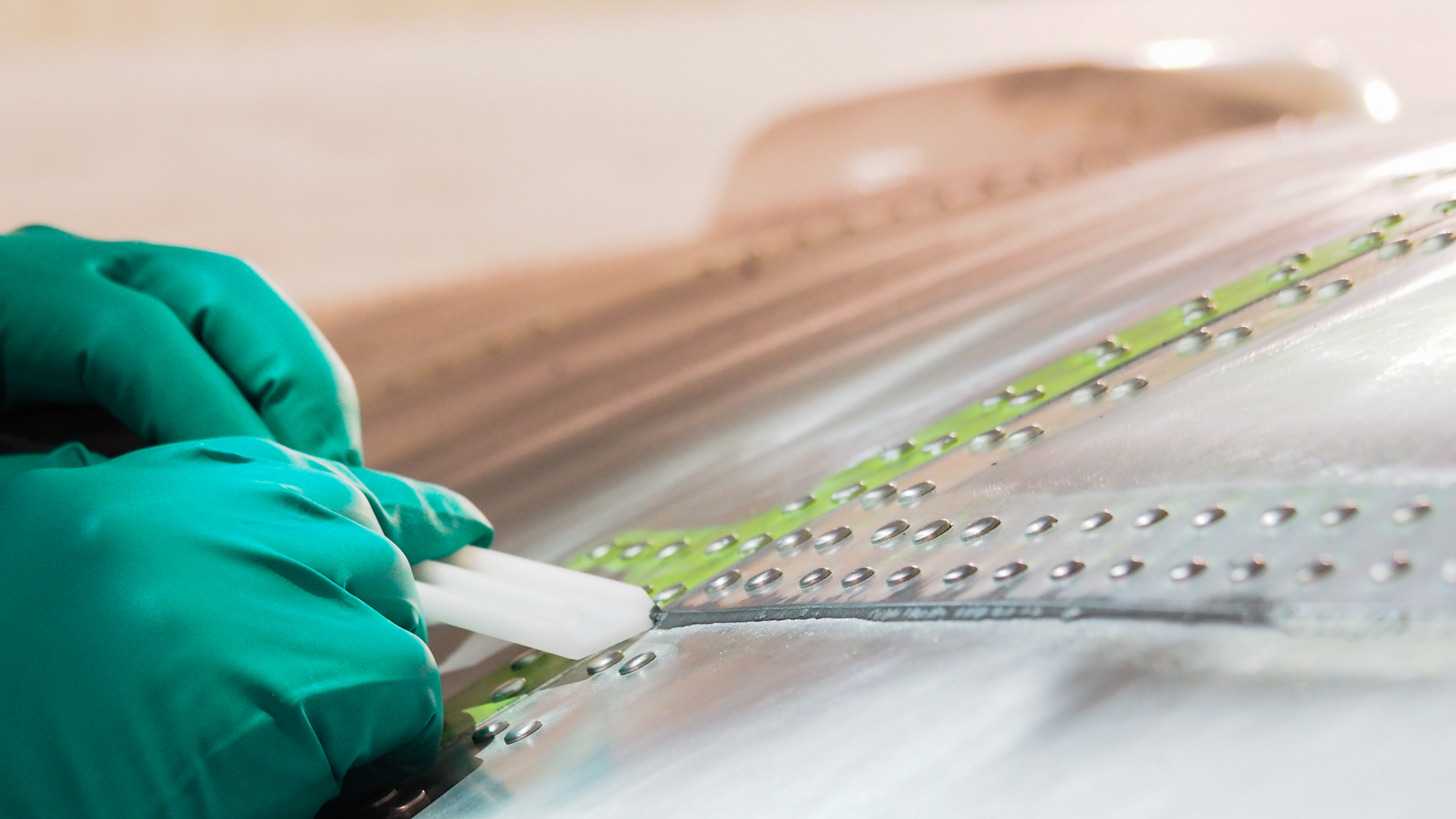

Aircraft airworthiness checks
During its life, an aircraft will undergo maintenance checks. It is the responsibility of the aircraft owner to ensure the aircraft is inspected after a certain amount of time or usage, in accordance with the aircraft manufacturers manual.
Airworthiness inspections are commonly referred to as “checks”, and are performed after the aircraft has completed a certain number of flights, flight hours, or after a period of time.
A and B checks are considered lighter maintenance and are usually performed at the gate or in an airport hangar over a number of hours.
Heavier maintenance is less frequent but mandatory to ensure the airworthiness of the aircraft. C and D checks are performed by MRO companies or the airline, if they have their own technical engineering division. During these checks, the aircraft is partly or fully disassembled. The fuselage, parts and equipment are checked, including the fuel tanks and landing gear.
During heavy maintenance, sealed parts/ areas have to be accessed in order to fully inspect them. Specific tools are needed to remove the sealant without damaging the part or surface. This is where scrapers are needed!
Mainly, sealants have to be removed:
- During maintenance:
- to access and check sealed areas such as access panels
- if parts and seals need to be replaced
- During paint shop operations:
- to check the structure of the fuselage
- in paint stripping operations where paint strippers are used to chemically remove the paint. Residue has to be removed by mechanical means and only scrapers will remove the fillet sealant.
- During preventative maintenance:
- sealants used in areas with highly corrosive products must be removed as a precaution. E.g.: sealants in contact with fuel in fuel tanks or hydraulic aviation fluid in landing gear or flaps must be removed and replaced regularly to guarantee a tight seal.
Why use different types of scrapers?
Different applications
A scraper is a tool used to remove aircraft sealant and adhesive prior to maintenance inspections. Scrapers are available in a variety of sizes and materials. Depending on the application, different types of scrapers can be used for maximum efficiency. Using SkyScraper resharpenable scrapers will help to:
- Increase productivity: scrapers are sharpened at point of use.
- Reduce costs: scrapers are reusable.
- Maximize safety and comfort: ergonomic handles and grips available.
- Reduce waste and ease waste management: scrapers are resharpenable and reusable. Waste weight is also reduced as in the end only the scraper is disposed of, the handle and accessories are reused.
- Reduce FOD risk: Anti-FOD fluorescent SkyViz UV clip available.
Aircraft sealant removal tools: different tools for different applications
The variety of aircraft maintenance requirements necessitates the use of a wide range of scrapers and tools:
- Cured sealant and adhesive removal.
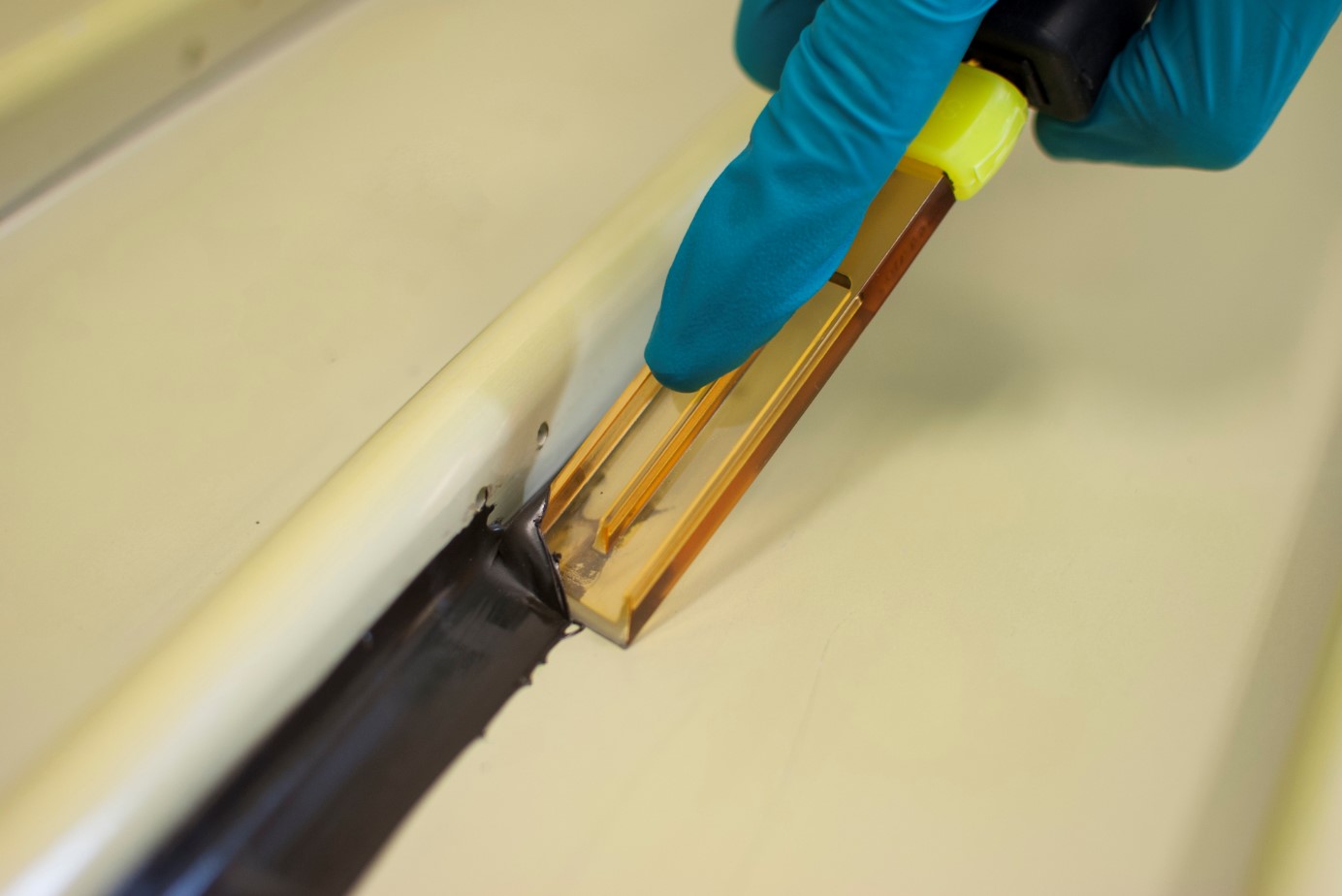

- Adhesive and sealant removal from large surface areas.
Certain tools are designed with 2 cutting edges, and are reversible for longer life. E.g.: The SkyBlade is available in 3 sizes: 2” (50.8 mm), 4” (101.6 mm) and 6” (152.4 mm). It is specially designed to remove double-sided tape from interior cabin carpets.
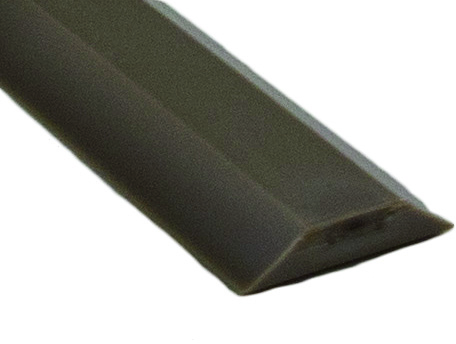

In addition to the sealant and adhesive removal range, SOCOMORE supplies a range of scrapers for cleaning seat tracks. The SkyScraper Seat Track is available in two different materials in Boeing, Airbus and Bombardier profiles.
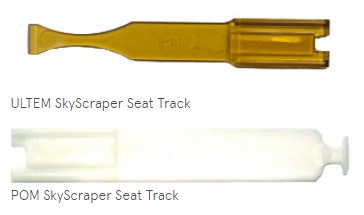

Different types of sealant to remove
In aerospace operations, cured sealant is removed using mechanical methods. Scrapers help to remove a variety of sealants:
- Polysulphide sealants (fuel tanks, fuselage, aerodynamic smoothing, access bay)
- Polythioether sealants (fuel tanks, fuselage)
- Silicone (electronic components, fuel tanks, hydraulic gear box)
- RTV silicone sealants (fuel line insulation, lenses)
- Rubber sealants (engine, bleed valves)
Sealant on aircraft parts
Sealants are used on various aircraft parts where a seal/ joint is required. During maintenance disassembly, sealants have to be removed from:
- Fuel systems:
- Fuel tanks
- Fuel access panels
- Fuel probes
- Fuselage fuel panels
- Fuselage:
- Panel joints
- Fuselage joints
- Access panels
- Fairing parts
- Wing box
- Engine pylons & nacelles
- Landing gear
- Windshield & canopy
Choosing the right plastic scraper
The SkyScraper sealant removal range was designed to suit all types of sealant removal operations found in aircraft maintenance. Compared to metallic scrapers, plastic scrapers are made of a softer material that will not damage or scratch surfaces. Plastic is also more flexible and can bend to reach difficult places.
Materials
In the past, companies used home-made metal tools which could scratch and damage parts and substrates. Today, most companies have switched to using POM scrapers which comply with BAC 5000 and can be used on BOEING aircraft. ULTEM scrapers, which are more rigid and more efficient at sealant removal, are also available. SkyScraper fluted scrapers are made of POM or ULTEM, materials that won’t scratch softer surfaces such as aluminium and composites. Plastic scrapers:
- Can bend to reach difficult to reach places
- Are easier to use
- Can be resharpened with sharpening devices, unlike fiberglass scrapers. Fiberglass particles are hazardous and can be inhaled into the lungs.
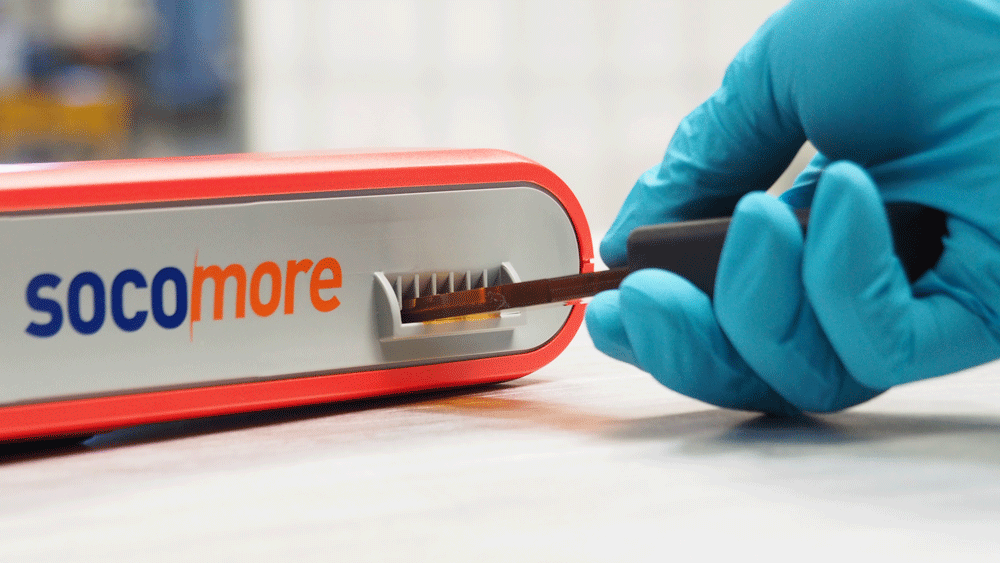

POM scrapers
POM stands for PolyOxyMethylene, also called Polyacetal. It is a high-performance polymer that offers low friction and wear characteristics. Read more about POM properties on Omnexus. Scrapers made of POM are smooth and can access difficult to reach areas. POM scrapers will flex inline with the shape of the substrate.
POM fluted SkyScraper scrapers are BAC 5000 approved and can be used on critical Boeing aircraft parts.


ULTEM scrapers
PolyEtherImide (PEI) is a high performance polymer branded under the name ULTEM (SABIC). ULTEM scrapers are more rigid than POM scrapers as they are 100% polymer. They are more efficient at sealant removal as greater strength can be applied, making it easier to remove the sealant.
ULTEM fluted SkyScraper scrapers can be used in sealant removal applications where BAC 5000 approved tools are not required.
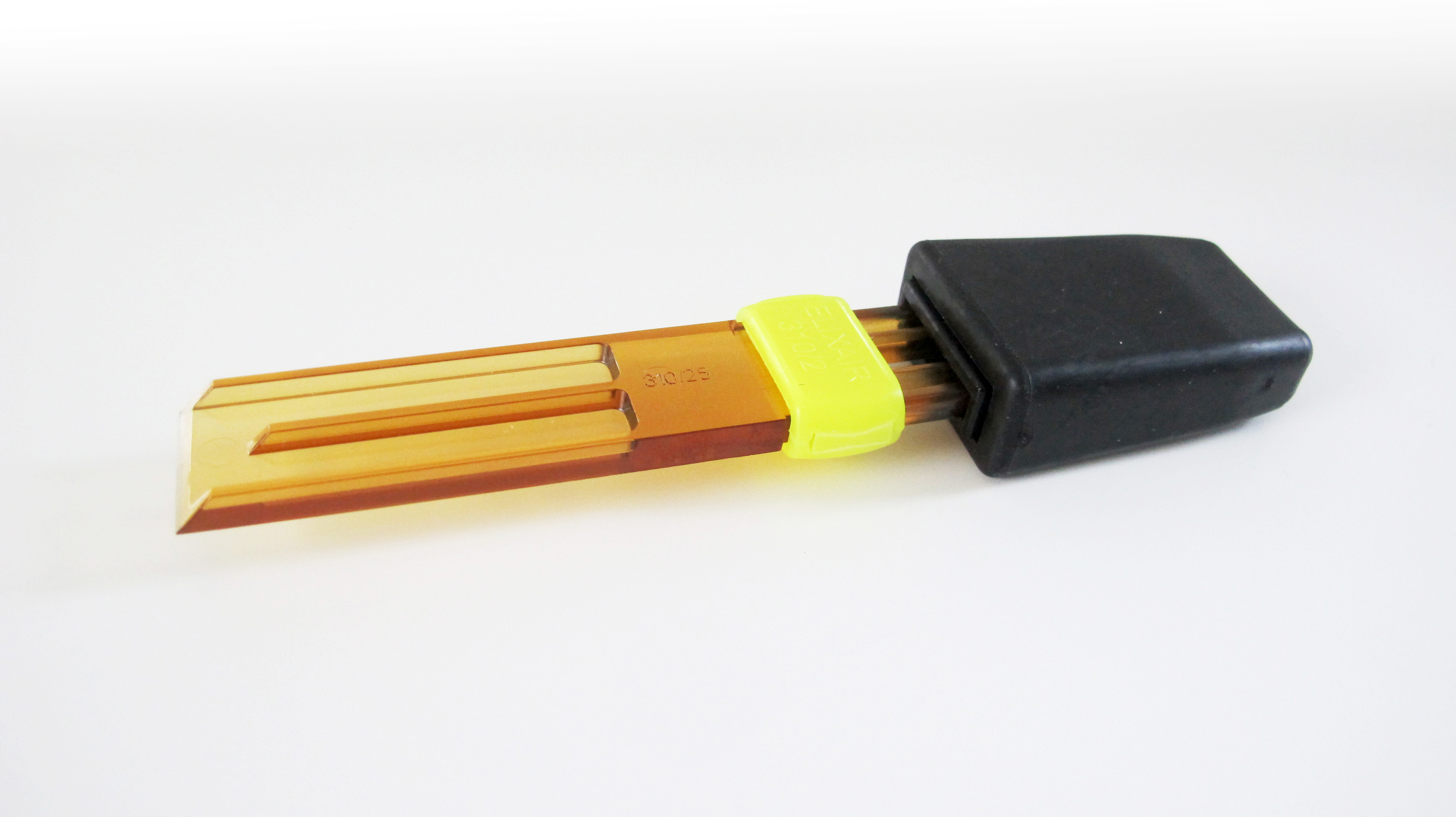

Resharpenable scraper benefits
Consider using resharpenable scrapers! Unlike a traditional disposable scraper, a resharpenable scraper can be used up to 20 times. SOCOMORE offers a full range of resharpenable fluted scrapers and sharpening devices. How many times can a fluted scraper be sharpened? Benoît Cote answers:
“Between 10 and 20 times, depending on how it is used. The more the scraper is sharpened, the smaller it becomes. Depending on the application, the scraper might need to be more or less flexible, or be a specific size.”
Using resharpenable scrapers and sharpening devices such as the SkyMill™ Revolution and SkyEdgit allows:
- the scraper to retain a sharp cutting edge for maximum efficiency
- effective adhesive and sealant removal
- the scraper to be resharpened and reused (>10 times)
- a reduction in scraper consumption and waste (by 10)
- the elimination of FOD risks thanks to the SkyViz, a fluorescent UV clip that can be attached to scrapers
Using resharpenable SkyScraper scrapers
Benoît Cote, Product Manager at SOCOMORE explains “One SkyScraper will generally last an operator a full shift as it will resharpened up to 10 times. This results in time savings and cost reductions for the company when compared to using single use scrapers.”
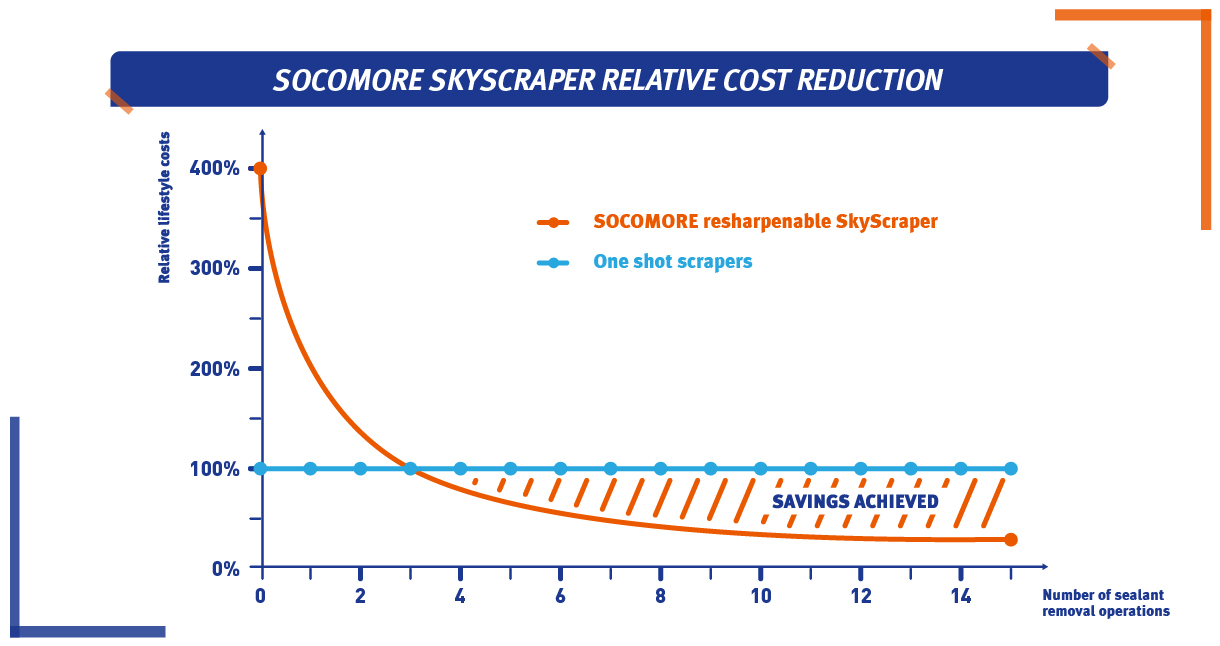

Scraper sharpening devices - how do they work?
- SkyEdgit: it’s like sharpening steel.
The scraper is inserted and manually turned to sharpen the edge. Each operator has a SkyEdgit and can resharpen the scraper at point of use, whenever needed.
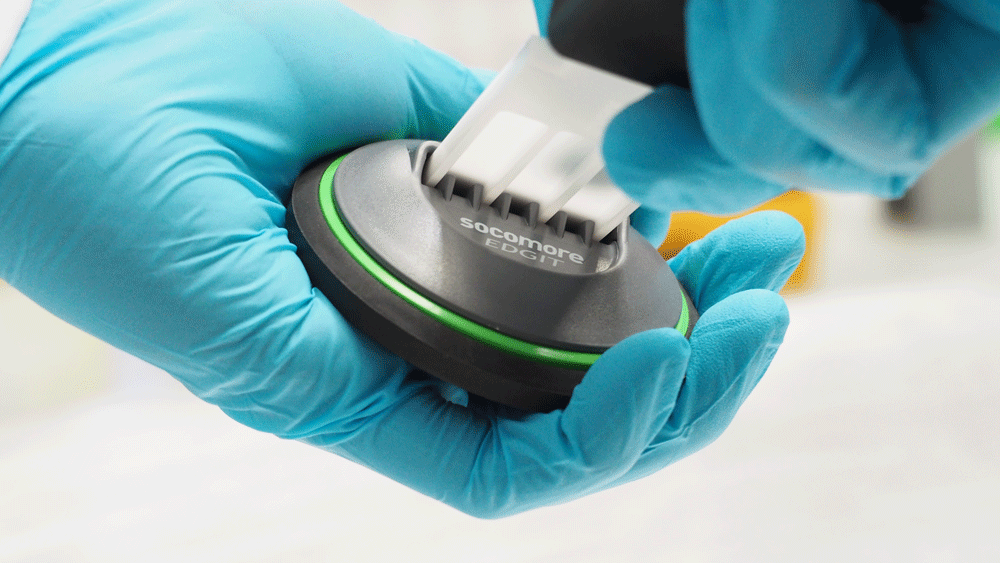

- SkyMill™ Revolution: it works like a grinding stone, thanks to its electronic mechanism.
The SkyMill™ Revolution is portable and located on a workstation where operators are working, or at tool cribs. One SkyMill™ Revolution can be used by 5 to 8 operators. The battery will last for a minimum of 12 hours when fully charged. Used daily, it has a life span of approximately 2 years. Usually, a fluted SkyScraper can be sharpened 4 to 5 times with the SkyEdgit before it needs to be sharpened with the SkyMill™ Revolution. Then it is ready for another “cycle”.
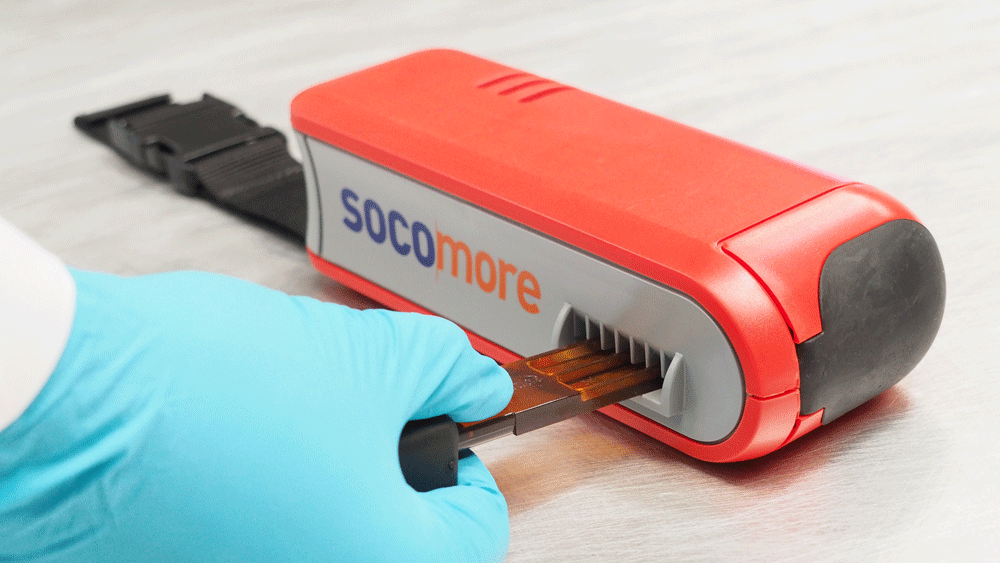

What about dust?
A dust receptacle collects dust generated from sharpening. This can be quickly emptied with the use of a vacuum system. The dust and scraper stubs are non-toxic and have no special disposal requirements.
Benoît Côte says “We are happy to offer a highly effective sealant removal solution to our customers. As they are plastic, our scrapers won’t scribe or scratch, are both flexible and rigid, and help to reduce costs! A range of accessories including handles and grips are also available to prevent injury.”
















